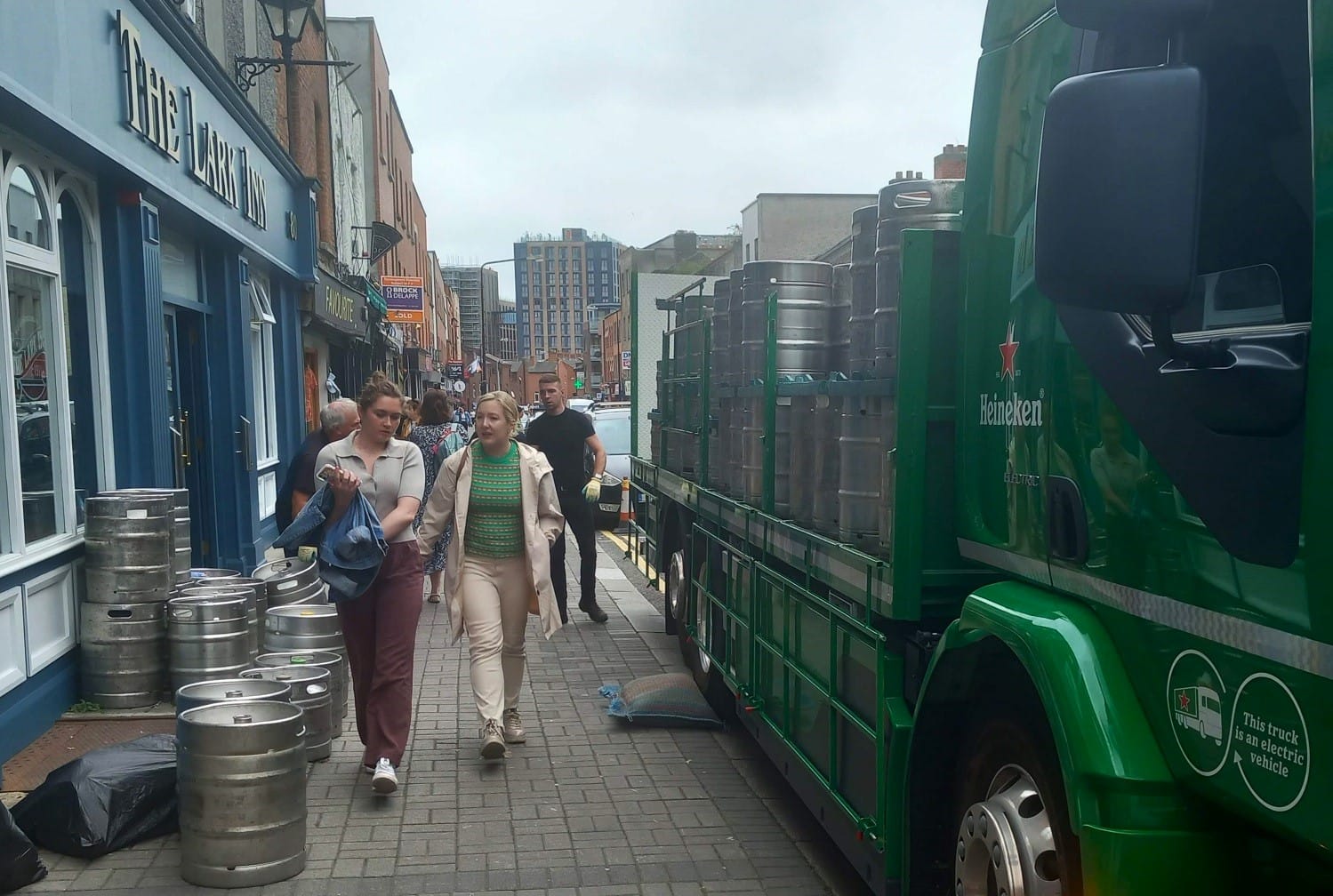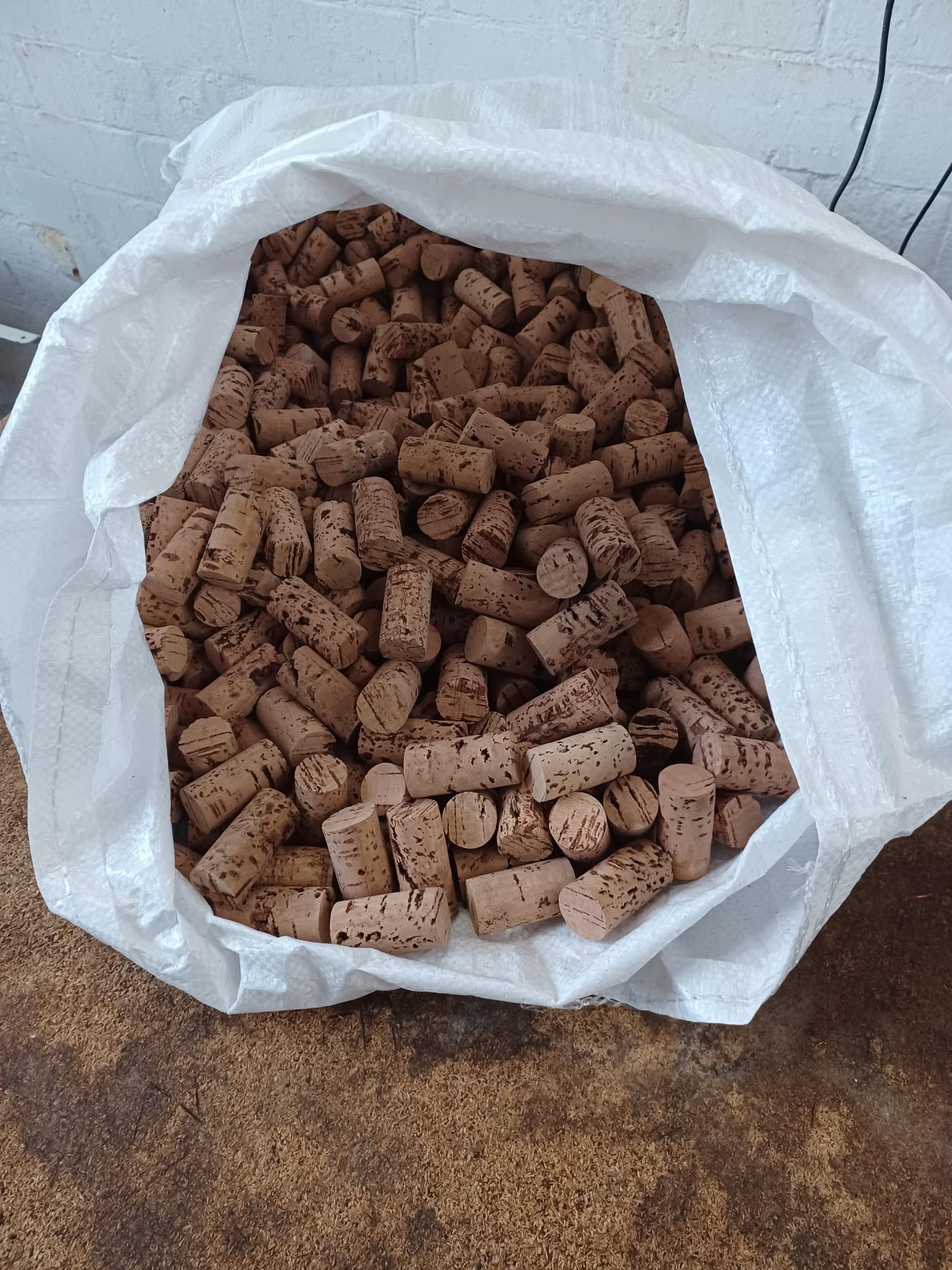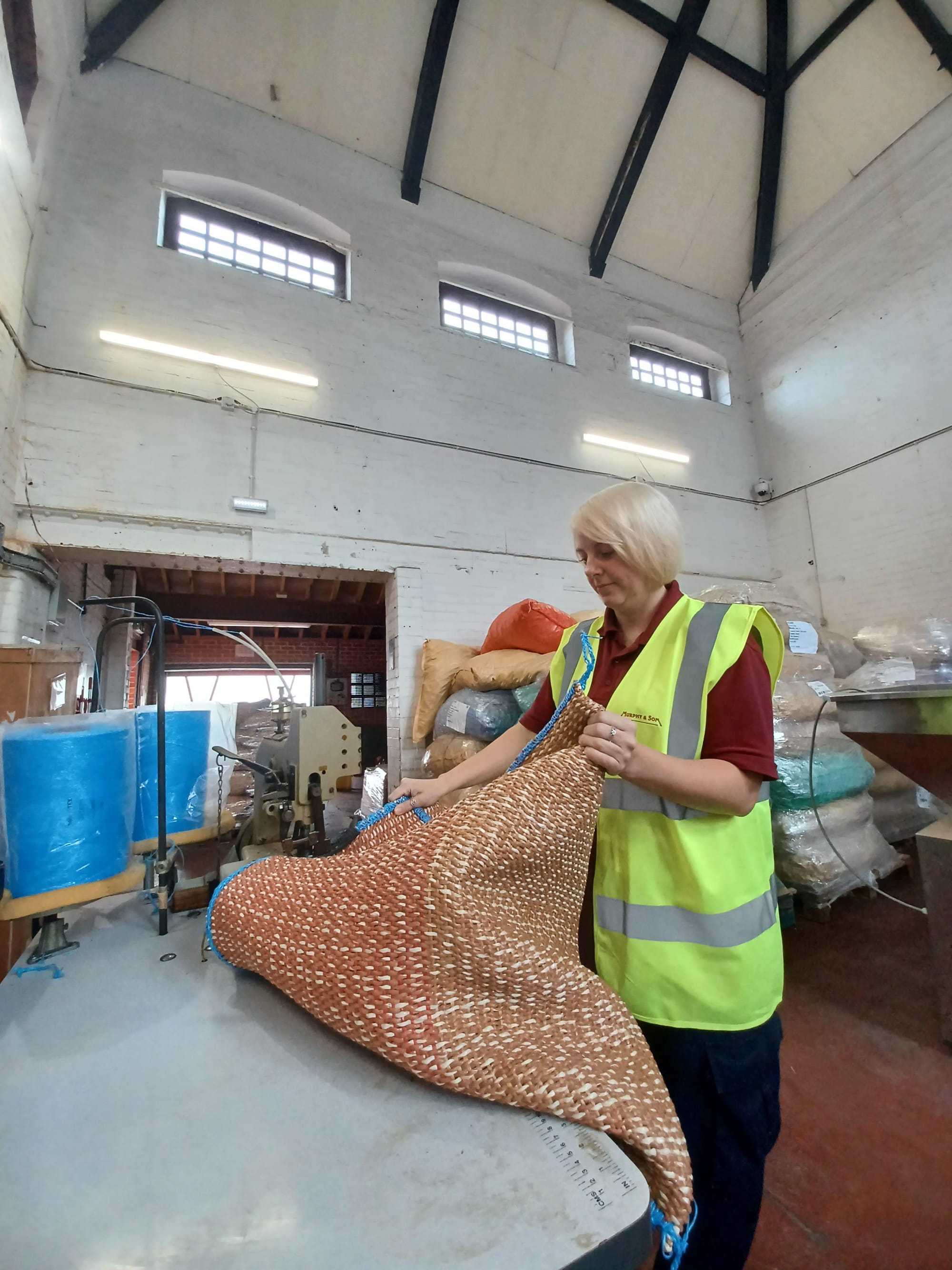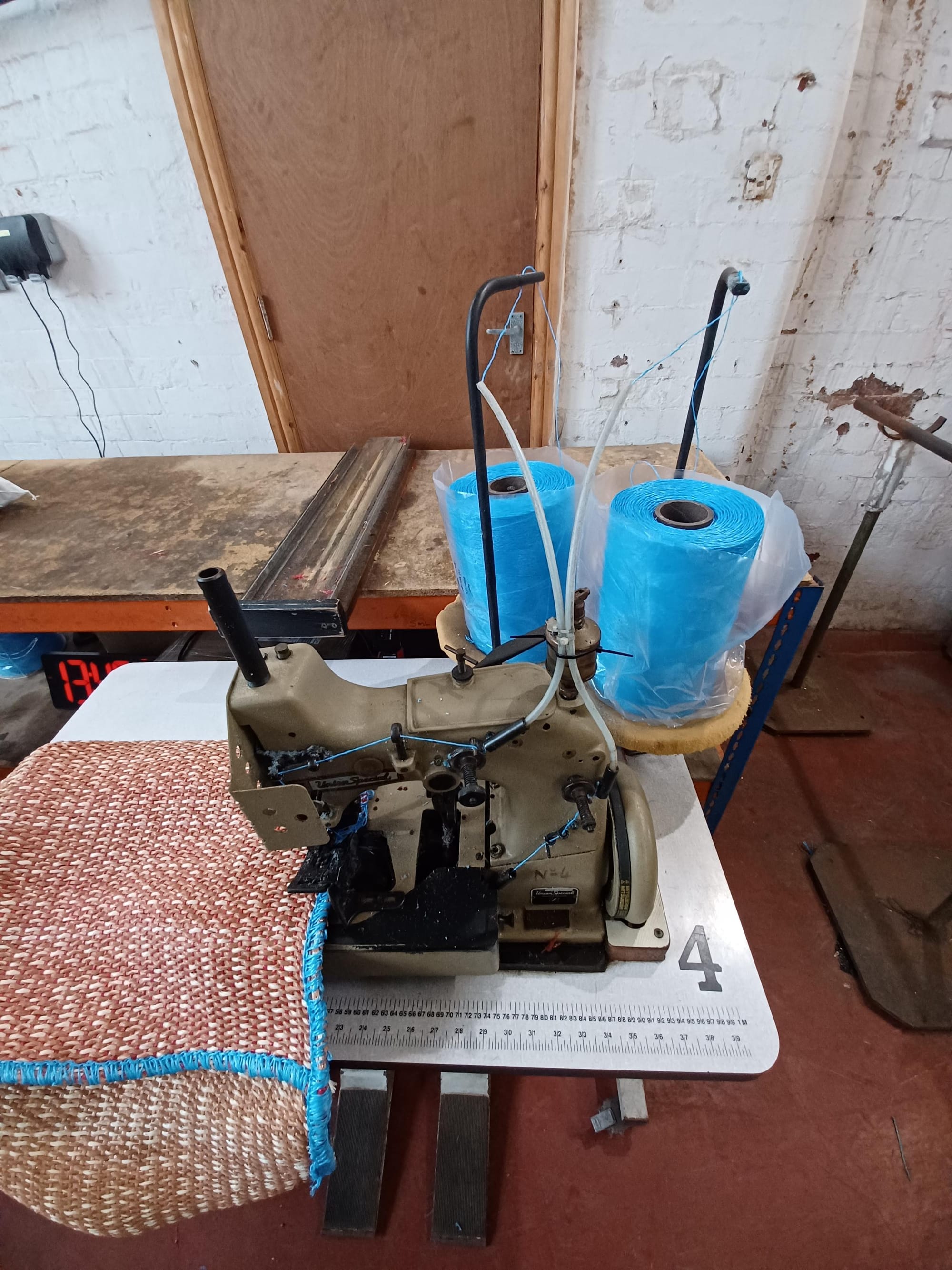What’s the best way to tell area residents about plans for a new asylum shelter nearby?
The government should tell communities directly about plans for new asylum shelters, some activists and politicians say.
Nottingham-based Murphy & Son, which makes the cork bags widely used in keg deliveries in Dublin, says it sells more to Ireland than anywhere else in the world.

On Temple Lane South on Tuesday morning, a big Guinness-black flat-bed truck was stopped outside the Temple Bar.
It was stacked with rows of silver kegs, hemmed in by a fence at the edge of the truck bed, to keep them from falling off.
About 9.30am, Christopher Doyle jumped down, plopped an industrial-looking pillow – not the kind you’d want to lay your head on at night, much rougher – on the footpath and went to work.
With help from Daragh Murphy, who was still up on the truck among the kegs, Doyle began dropping the kegs off the truck onto the pillow one by one – thump!
And rolling them – rattle, scrape – across a narrow bit of footpath, and down the hatch into the basement below the pub.
Over on Thomas Street, Chris Culverwell was doing something similar from a Heineken-green truck, outside the pub Tom Kennedy’s.
Thump! Rattle, scrape. Thump! Rattle, scrape.
Where do these strange pillows, curiosities of the city’s landscape, come from?
“Diageo,” says Doyle, dropping another keg from the truck onto one of them.
But before they get to Diageo, they come from Murphy & Son in Nottingham, where they are stitched in an imposing, ornate, century-old, red-brick brewery building – mostly for use in Ireland.
“We sell more cork bags to Ireland than anywhere else in the world (including England on our doorstep),” the company’s head of sales, Brandon Critchell said by email.
Cork bags are very widely used in delivering beer kegs to pubs around Dublin, says Mark Goode, of beer distributors D&M Premium Bars, based in Dublin 12.
“You’re dropping the kegs down from a height,” says Goode, and if you didn’t put the cork bag down, all kinds of bad things might happen.
“It could chip the footpath, it could take a bad bounce and hurt someone, it could damage the spear inside the keg,” Goode says.
The “spear” in a keg is a metal tube that extends from the neck valve nearly to the bottom, and allows gas under pressure to enter the keg and drive beer to the tap.
“If it [the keg] hits too hard it’ll split and the beer is lost, and that’s a crying shame,” says Culverwell, after unloading kegs outside Tom Kennedy’s.

Using a cork bag isn’t the only solution, says Critchell, of Murphy & Son. There are also “drop mats” that delivery teams could use.
“That’s just a big foam pad with, like, a leatherette cover and you’ll find them or more relevant in England,” Critchell said by video call from Nottingham recently.
Cork bags are hardier, and last longer, but they take a bit more skill to use properly, he says.
It’s best to soak them in water first so the cork gets a bit less bouncy, Critchell says. Indeed, Culverwell says, when the bags are wet they work better.
As the bags age, the corks get bashed up and turn into powder, says Culverwell. They cost “£50-ish” and might last two or three years, says Critchell.
“Whereas the sponge pads, they sort of are just more forgiving when you’re delivering but don’t have as good a life expectancy,” Culverwell said, and cost four times as much.
The cork bags are probably more popular in Ireland because whatever type of pillow that’s going to be used here is going to take more of a beating, Critchell says.
“Probably the reason why the cork bags are preferable in Ireland is because of the quantity of beer that’s gone through, and the size of the kegs that you use,” he said.
“Especially the Guinness kegs, we’re talking the big ones, the 22-gallon legs, which are – they’re heavy,” he says.
“In the UK nowadays, most pubs are operating on 11-gallon kegs, which are obviously half the size, so you probably can get away with the drop mats,” he says.
Another option besides cork bags and drop mats is layers of cardboard laid out on the footpath, says Doyle. But that’s not nearly as good.
The bags, Critchell says, are made in Murphy & Son’s building in Nottingham.
Completed in 1881, it was formerly known as the Hutchinson’s Prince of Wales Brewery, according to Historic England, a public body which, among other things, maintains a list of buildings of special historic or architectural interest.
It was sold to Murphys in 1921, according to Historic England. In this old building – a “complete nightmare for our production manager, but quite a sight when you walk up Basford Hill from the tram”, says Critchell – the cork bags are made.
There are basically just two pieces: cork, which comes from Portugal, and a rough hessian fabric, which comes from East Anglia, says Critchell.
“We’ve got a couple of the production team who whenever they need to fill up the stock so they have like a week at stitching basically,” he says.



They fill hessian bags with cork and sew them up, using a stitching machine, he says, making about 5,000 a year.
Critchell said Murphy & Son’s big customers in Ireland for cork bags are Heineken and Shannon Transport Logistics, which does deliveries for Diageo, which makes Guinness.
Outside the Temple Bar, Doyle is still dropping kegs off the Guinness truck. Thump! Rattle, scrap. Thump! Rattle, scrape.
The rhythm that could be heard down Essex Street outside The Snug, that same morning, outside the Lark Inn on Meath Street on a recent Wednesday – and across the city centre.
Get our latest headlines in one of them, and recommendations for things to do in Dublin in the other.